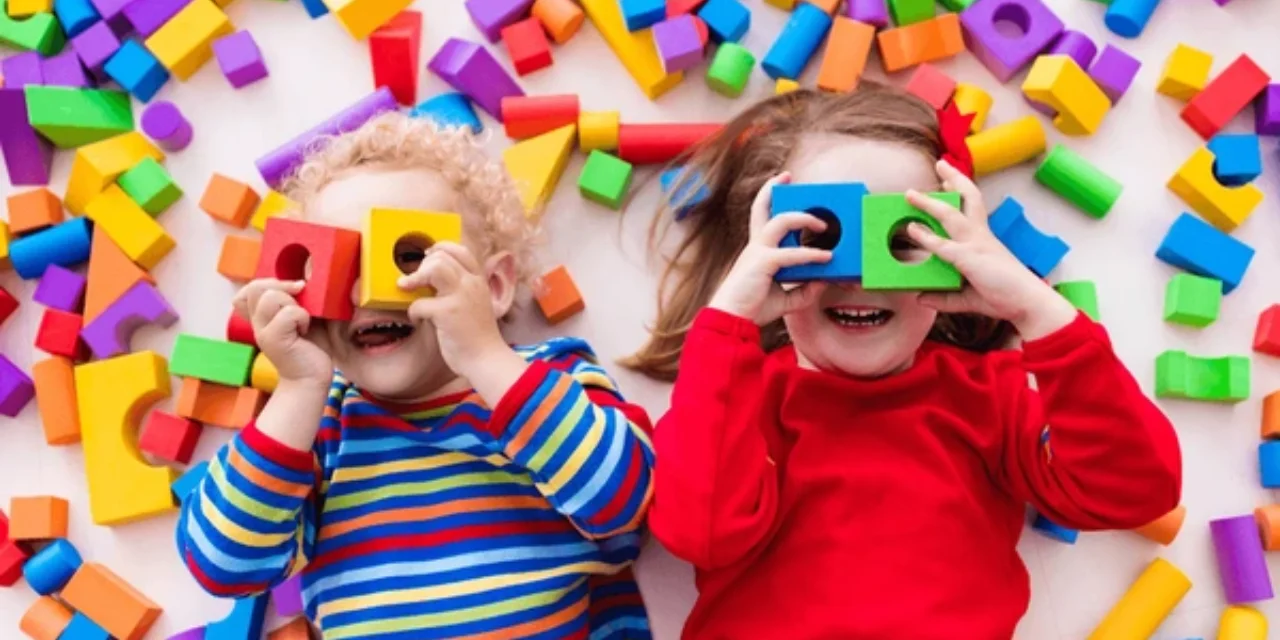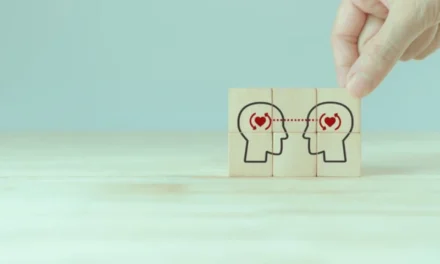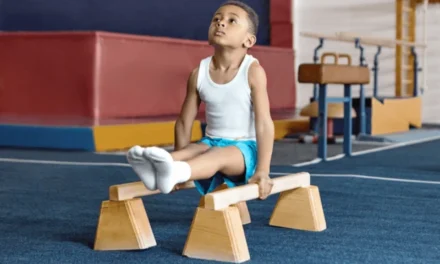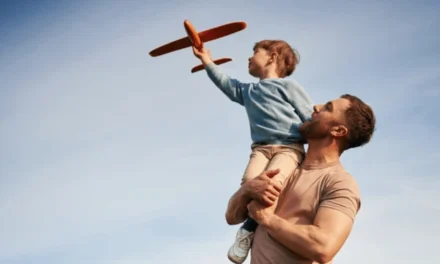Did you know that 1 in 5 preschoolers feel anxious when they start school for the first time1? This shows how tough the preschool years can be for young kids. They face many challenges, from getting used to new friends to learning to control their feelings.
In this guide, we’ll look at three big challenges preschoolers face. We’ll share tips from experts to help your child grow. You’ll learn how to help with anxiety, talking problems, and making friends. This will help your child do well in preschool.
Key Takeaways
- Separation anxiety is a common issue for first-time preschoolers
- Preschoolers may struggle with communicating their needs in a new environment
- Adjusting to group settings can be challenging for some children
- Aggressive behaviors like biting and hitting are often normal at this age
- Consistent routines and at-home support can aid in preschool development
Understanding Preschool Development Milestones
The preschool years are crucial for young children’s growth. They go through big changes in physical, cognitive, and social-emotional areas. These changes are key for their future success2. It’s important for parents and teachers to know these milestones to help children overcome challenges.
Physical Development Markers
Preschoolers get better at moving and controlling their bodies. They can do things like run, jump, and climb better. By age 3, they can calm down quickly, play well with others, and avoid hot things2.
Cognitive Growth Expectations
Preschoolers get better at talking, solving problems, and using their imagination. They start asking questions, drawing simple shapes, and talking back and forth3. By age 4, they can pretend, comfort others, and answer simple questions2.
Social Skills Development
Preschoolers learn how to interact with others, feel empathy, and manage their emotions. They can take turns, play together, and share their feelings2. Playing games that teach emotions, taking turns, and pretending can help them grow socially2.
Watching how preschoolers grow helps parents and teachers spot any issues early. This way, they can offer the right help3. Knowing these milestones helps caregivers help children reach their best2.
Parents can check their child’s development for free at www.agesandstagesresearch.com. They can look at communication, motor skills, problem-solving, and social skills2. They can also contact their local school for free checks or special help if needed2.
Separation Anxiety: A Primary Challenge
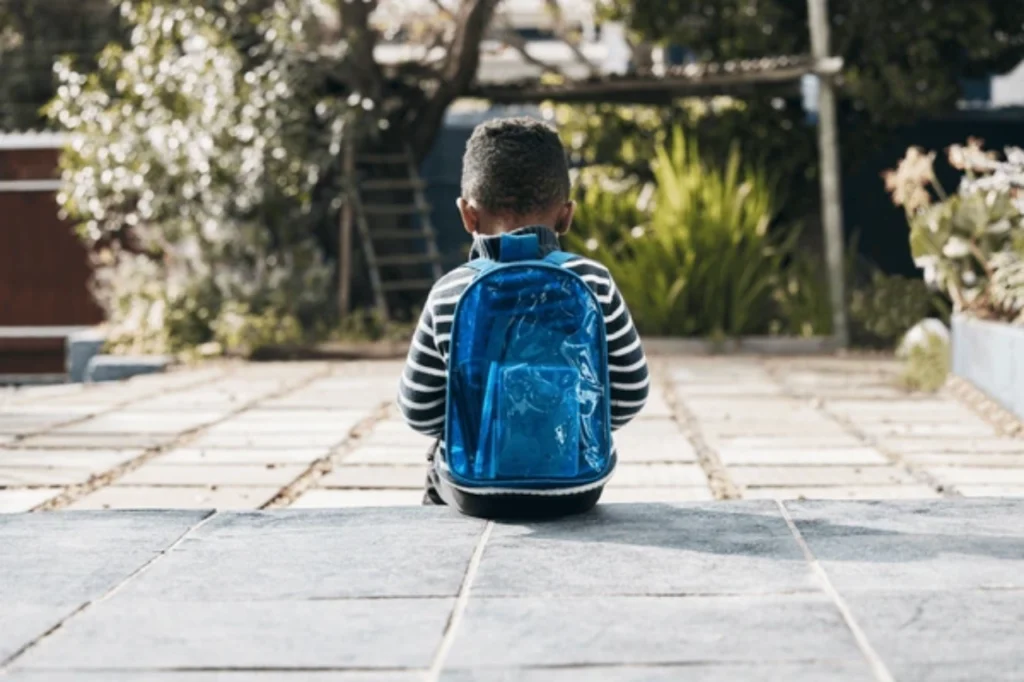
Separation anxiety is a big challenge for preschoolers starting school. It’s normal for young kids to feel scared when they leave what’s familiar. Separation anxiety disorder can make kids not want to go to school. It can also make it hard for them to play with family and make friends4.
Getting help for school refusal is very important. It can make the problem better faster and help kids not get stuck with it for a long time4.
Most kids get over separation anxiety by the time they are 5 or 7 years old56. But some kids might keep feeling scared and it could become a serious problem. About 4% of kids in general and up to 7.6% in doctor’s offices have this problem5.
To help kids deal with feeling scared when they’re apart, parents can try a few things. For example:
- Give them something special, like a family photo, to hold when they’re apart
- Make saying goodbye a routine so it feels more predictable
- Slowly get them used to being apart for longer times
- Be understanding and tell them everything will be okay
Using theseparenting strategies can help kids adjust to preschool better and feel less scared6.
It’s key to remember that feeling scared when apart is normal for kids. But if it’s really bad and keeps happening, they might need help from a doctor5.
Communication and Language Barriers
During preschool, kids might find it hard to express themselves, especially in new places or when learning a new language. This can affect their language development and communication skills7. But, with the right help, parents and teachers can guide them through these hurdles and help them grow in preschool learning.
Expression Difficulties
Children with developmental language disorder (DLD) may find it hard to share their thoughts and needs. DLD affects about 1 in 14 kids in kindergarten, and 50 to 70 percent of them have a family member with it7. Also, kids with DLD are more likely to have reading and math problems7. It’s key to be patient and encouraging to help them feel more confident.
Language Development Support
For kids learning English as a second language, it’s vital to keep using their first language while learning new words. This can mean translating, practicing greetings, and valuing their efforts to communicate8. Tools like Google Translate can also help connect different languages and cultures, making it easier for teachers to talk with parents about their kids’ needs8.
Building Vocabulary Skills
Activities like talking, reading, singing, and playing in different languages can boost a child’s vocabulary and confidence8. It’s also important to understand non-verbal cues like body language and tone of voice. These help kids grasp emotions and thoughts, even when they can’t speak8.
By tackling communication and language barriers, preschoolers can gain the skills needed to succeed in school. With the right support, these challenges can be overcome, paving the way for future success in academics and social interactions.
Social Integration Struggles
Preschoolers often face challenges with social skills, preschool friendships, and peer interactions. This can make them feel isolated and hard to fit in with their classmates or community9.
Studies link social isolation to higher anxiety and depression in kids and teens9. High levels of stress hormones and poor brain development are also tied to feeling left out9.
To help preschoolers with these social integration struggles, parents can:
- Arrange playdates or community activities for social interaction outside of school9.
- Teach basic social skills like sharing and taking turns to help them connect with peers9.
By supporting their child’s social development and encouraging preschool friendships, parents can make sure their child feels included and supported9.
The global community is working on social integration challenges. The 47th Session of the Commission for Social Development is focusing on these issues. They’re especially looking at how to tackle poverty and social exclusion10.
It’s important to adapt social protection systems to help the most vulnerable during economic hard times10.
Ensuring all children have access to quality education, jobs, and healthcare is key for social integration and community cohesion10.
| Indicator | Value |
|---|---|
| Number of studies screened | 5199 |
| Number of studies included | 129 |
| Focus of included studies | |
| Locations covered in studies | New Zealand, India, USA, Mexico, Canada, Netherlands, Spain, China9 |
| Sample sizes | Ranging from 48 preschool children to 1,037 newborns followed up until they were 26 years old9 |
| Study designs | Retrospective and prospective cohorts, with durations spanning from two years to follow-ups until participants were 32 years old9 |
| Methodological quality | Evaluated using the AHRQ checklist, with scores categorizing studies as low quality (0-3), moderate quality (4-7), and high quality (8-11)9 |
“Adapting social protection systems is crucial to protect the most vulnerable during times of economic crisis. Social policies must be transformative to enable disadvantaged populations to participate fully in society and the economy.”
Emotional Regulation Issues

Dealing with emotions in preschool years is tough for young kids. Emotion regulation is key to managing feelings well. It’s a skill that kids start to learn during this time11. They might show signs of not being able to control their emotions as they try to get better at it11.
Managing Tantrums
Tantrums are common in preschool as kids try to handle big feelings. It’s crucial for adults to stay calm and understand the child’s feelings. Creating a calm space, naming feelings, and showing how to express them can help12.
Understanding Emotions
Learning to manage emotions takes time, and it’s different for every child11. Parents should be patient and supportive, just like teaching other skills11. Keeping things consistent at home and school helps kids grow emotionally11.
Self-Control Development
Learning to control emotions is a vital skill that gets better with age12. It affects how well kids do in school and later in life12. Teaching kids to distract themselves, practice mindfulness, and see things in a better light can help12.
| Emotion Regulation Strategies | Description |
|---|---|
| Distraction | Shifting attention away from the emotional trigger to something more positive or neutral |
| Mindfulness | Cultivating present-moment awareness and acceptance of emotions without judgment |
| Reappraisal | Reframing the situation or emotion in a more positive or adaptive way |
Using these strategies, we can help preschoolers develop the self-control they need for success12.
“Emotion regulation is a learned skill that may vary among children in terms of speed and effectiveness. Parents should be patient and supportive, similar to how they would approach teaching other skills in childhood.”
If a child shows signs of serious emotional problems, it’s best to talk to a doctor11. Sudden changes in behavior could mean something serious is going on, and medical help is needed11.
Knowing about emotional development helps parents and teachers support preschoolers better13.
Common Behavioral Concerns
Preschools face many behavioral challenges, like biting and bullying. These issues often come from trouble with communication or social skills14. This can make it hard for kids to get along with others and share their needs14.
To tackle these problems, we need to teach empathy and good social skills. We also need to praise kids for good behavior14. It’s important for parents and teachers to work together. This way, they can come up with consistent ways to handle and prevent bad behavior14.
| Behavioral Issue | Potential Causes | Strategies for Support |
|---|---|---|
| Temper tantrums | Anxiety, ADHD, learning disorders, sensory processing issues14 | Teach emotional regulation, provide calming sensory inputs, reinforce positive behaviors14 |
| Disruptive behavior | Oppositional defiant disorder (ODD), conduct disorder (CD), co-occurring ADHD15 | Consistent discipline, behavior modification techniques, collaborative evaluation15 |
| Withdrawal or shyness | Social anxiety, trauma, sensory processing challenges14 | Encourage social interaction, provide a safe, supportive environment, build confidence14 |
By tackling the root causes and teaching kids important skills, we can handle common preschool problems1415.
The Role of Parents in Development
Parental involvement is key for preschool children’s16 growth. A caring, supportive home environment boosts their confidence, social skills, and independence17. Consistent routines make kids feel safe and teach them to manage their actions.
Supporting Learning at Home
Parents are essential in boosting their child’s16 learning and growth. Through daily activities, talks, and play, they help their child’s brain, social, and physical development18.
Creating Consistent Routines
Good communication with teachers is vital for tackling any16 challenges a child might face17. Setting rules helps guide a child’s behavior during their authority stage (2 to 4 or 5 years old).
| Parental Involvement Strategies | Benefits for Child Development |
|---|---|
| Establishing consistent daily routines | Promotes feelings of security and independence |
| Engaging in interactive play and conversations | Supports cognitive, social, and physical growth |
| Maintaining open communication with teachers | Ensures a unified approach to addressing challenges |
By focusing on16 parental involvement, families can build a supportive space for preschoolers to grow17. A parent’s age, gender, beliefs, and health shape their parenting and the child’s success.
“The research maintains a focus on providing concrete guidelines for parents based on the outcomes of the studies.”
Developmental Challenges in Group Settings
Preschoolers face big challenges when learning to work together. Preschool socialization means learning to share, follow rules, and get along with others. Some kids find it hard to take turns, respect others’ space, or say what they need19.
Teachers are key in helping kids learn to work in groups. They set up activities, show good behavior, and encourage teamwork. Parents can help too by planning playdates and family activities that teach kids to work together19.
- Setting clear rules for group behavior
- Teaching kids to take turns, share, and be kind
- Starting group projects and games to build teamwork
- Helping solve problems when kids disagree
- Celebrating when the group does well and each person’s role
By tackling classroom challenges and supporting group learning, both teachers and parents help kids grow. They learn important social and emotional skills for school19.
“Effective group participation is a critical life skill that lays the foundation for future academic and social success.”
Working together, parents and teachers can help preschoolers smoothly move into school. This teamwork sets the stage for a lifetime of learning and growth19.
Building Independence Skills
Helping preschoolers become independent is key to their growth. It prepares them for life’s challenges. Parents and caregivers can encourage this by teaching self-help skills and letting them make choices.
Self-Help Activities
Teaching preschoolers to dress themselves, eat alone, and keep clean boosts their confidence20. A regular routine helps them feel in control of their day20. Letting them help with chores like cooking or cleaning makes them feel responsible20.
Decision-Making Practice
Letting preschoolers make choices helps them feel more in charge20. Giving them a few options lets them feel they have control20. This not only improves their decision-making but also boosts their self-esteem.
20 Activities like arts and crafts, building, and puzzles help kids focus and feel accomplished20. Free play is essential for creativity, problem-solving, and independence.
21 Without self-help skills, kids may be much younger than they seem21. Teaching these skills helps parents too, by not doing everything for their child21.
20 Letting kids handle tough tasks helps them learn to handle frustration and solve problems21. Encouraging independence through self-help skills benefits both children and their families.
21 Parents might not always know how independent their child is21. Learning self-help skills is important for social skills and adapting to different places.
20 Using strategies like praising good behavior and imitating it can help young children learn2021.
Adapting to School Environment
Going from preschool to school can be tough for young kids. They face new routines, more schoolwork, and bigger classes. Being able to adapt well is key to doing well in school, especially when moving from preschool to regular school22.
Helping kids get used to school by visiting before starting is a good idea. Talking about school at home also helps. Letting kids do simple things like open their lunch or hang up their coat builds confidence23.
Talking positively about school and quickly fixing any worries is important. Teachers who can change their teaching to fit different students do better24. This way, they can help students who need extra help and challenge those who are advanced24.
Creating a supportive classroom helps kids adjust to school. This support is key for their success in school for a long time2322.
| Strategies for Smooth Preschool-to-School Transition | Benefits |
|---|---|
|
|
“Adaptivity is seen as a core element of successful school entry, particularly in transitioning from preschool to mainstream school, predicting future academic success.”22
Supporting preschoolers as they move to school is vital. By being flexible, open, and creating a positive classroom, teachers can help them adjust well. This sets the stage for their future success in school.
Managing Peer Relationships
Learning to make friends and solve problems are key skills for kids. Preschools and youth programs are great places for kids to make friends25. Teachers help by planning activities that build friendships and encourage kids to interact freely25.
Friendship Formation
Studies show that schools and programs that focus on positive friendships get great results25. There are five important ways to build strong relationships: showing care, challenging growth, providing support, sharing power, and expanding possibilities25. When kids help make decisions, they feel more connected and valued in their groups25.
Conflict Resolution Skills
Dealing with conflicts is a big part of growing up. Being liked by classmates is important for kids, as it helps them avoid aggressive behavior and boosts confidence.26 Teaching kids to talk about their feelings and find solutions is key. Role-playing helps them practice how to handle different social situations26.
Parents play a big role in helping kids make friends. Research shows that kids’ social skills improve with parental support26. Giving gentle feedback and praise helps kids feel more confident and resilient26.
| Positive Peer Relationship Strategies | Outcomes |
|---|---|
| Structured relationship-building activities | Promotes shared norms and group cohesion |
| Balanced with free time for informal interactions | Allows for natural social skill development |
| Shared leadership and decision-making opportunities | Fosters a sense of ownership and belonging |
| Explicit teaching of conflict resolution skills | Helps children navigate peer challenges |
| Positive parental involvement in social activities | Supports the development of social competence |
Preschool is a critical time for kids to learn social skills. By using proven methods, parents and teachers can help kids make friends and solve problems2526.
Learning Through Play
Play is key in preschool learning, helping with thinking, social, emotional, and physical growth27. Young children spend 3% to 20% of their time playing27. Exercise play grows from toddlers to preschool and peaks in early primary school27. Social play jumps up from 2 to 6 years old27, while 2- and 3-year-olds often play side by side27.
Supporting different play types, like imaginative, constructive, and physical play, boosts a child’s preschool education and cognitive development. Offer materials that spark creativity and problem-solving. Also, play with them to show language, social skills, and thinking concepts28. “A Pedagogy of Play” shows playful learning makes students curious and interested in learning28.
- Encourage play-based learning activities that foster imagination and problem-solving skills
- Join in play sessions to model language, social skills, and cognitive concepts
- Provide open-ended materials that stimulate creativity and exploration
28 Teachers should make learning fun and full of surprises to keep students engaged28. They should also look into playful learning in their communities. Use a Playful Learning Indicator Guide and share their findings to improve future learning28.
“Playful learning can help students explore the unknown and find wonder, making them curious and interested in their learning experiences.”
Supporting Physical Development
Preschool years are key for physical growth. Children’s motor skills and coordination improve fast. Each child grows at their own, and it’s important to recognize this29. Knowing how motor skills develop helps caregivers give the right challenges and experiences.
It’s vital to give preschoolers lots of chances for active play. This includes running, climbing, and playing with balls. Outdoor play boosts physical growth and helps kids use their imaginations and feel less stressed29. Fine motor skills, like drawing and cutting, also improve dexterity and coordination.
Creating a safe space for kids to explore and try new things is crucial. Providing materials that fit their abilities helps them grow their motor skills and engage with their world29. Sensory-rich experiences also help brain cells connect, which is key for learning and growth29.
| Physical Development Milestones | Age Range |
|---|---|
| Run and climb proficiently | 3 years old |
| Hop, balance on one foot, and perform certain artistic tasks | 4 years old |
| Walk up stairs with one foot on each step | Older toddlers |
| Varying heights and weights due to individual growth rates | School-age children |
| Improved motor skills due to hormonal changes | Puberty |
By offering a variety of preschool physical development activities, caregivers help kids grow their motor skills. This encourages active play and supports the overall health and development of young children2930.
Creating a Supportive Learning Environment
Creating a caring and exciting learning space is key for preschool kids’ growth. In the classroom, setting up different areas for activities and making materials easy to reach helps a lot. Also, having quiet spots for rest is important for a good learning experience31.
Studies show that kids do better in school when they’re in a positive learning space. They also have more positive interactions with teachers and parents31.
Classroom Setup Tips
Think about setting up different zones in the classroom. You could have a reading corner, a block-building area, and a space for creativity. Make sure the furniture and materials encourage kids to explore and learn on their own31.
Keep the classroom tidy and colorful to spark curiosity. High levels of parent involvement also make a big difference in creating a positive learning environment31.
Home Learning Spaces
Having a special learning area at home is great for preschool kids. Make a space that’s free from distractions and has the right materials. Let kids help set up their learning area to feel more in charge32.
Working together with kids to create a supportive learning space can really help their well-being. It can improve their emotional, physical, and academic health32.
FAQ
What are the common developmental challenges faced by preschoolers?
How can parents support their child’s physical, cognitive, and social development during the preschool years?
How can parents help a preschooler overcome separation anxiety when starting school?
What strategies can parents and teachers use to support a preschooler’s language development and communication skills?
How can parents and educators help a preschooler struggling with social integration and making friends?
What are effective strategies for helping a preschooler manage emotional regulation and prevent behavioral issues?
How can parents and teachers work together to address common behavioral concerns in the preschool setting?
What is the role of parents in supporting their child’s development during the preschool years?
What unique challenges do preschoolers face in group settings, and how can teachers and parents support their development?
How can parents encourage independence and self-help skills in their preschool-aged child?
What strategies can parents and teachers use to help a preschooler adapt to the structured school environment?
How can parents and teachers help preschoolers navigate peer relationships and resolve conflicts?
What is the importance of play in preschool learning and development?
How can parents and teachers support the physical development of preschoolers?
What elements are important in creating a supportive learning environment for preschoolers, both at home and in the classroom?
Source Links
- 7 Common Problems Preschoolers Face In School
- Developmental Milestones for Preschoolers – Ages and Stages
- Training Module 2 | Watch Me! | Learn the Signs. Act Early. | NCBDDD
- Separation Anxiety and School Refusal: Practice Essentials, Background, Pathophysiology
- Separation Anxiety Disorder – StatPearls
- Separation Anxiety in Children
- Developmental Language Disorder
- How To Tackle Language Barriers in Early Years
- Social isolation and its impact on child and adolescent development: a systematic review
- SOCIAL INTEGRATION LACKS ATTENTION IT DESERVES, UNDER-SECRETARY-GENERAL SAYS AS COMMISSION FOR SOCIAL DEVELOPMENT BEGINS FORTY-SEVENTH SESSION
- Emotional dysregulation: How to feel about managing feelings
- The Neuroscience of Emotion Regulation Development: Implications for Education
- Emotion-Related Self-Regulation and Its Relation to Children’s Maladjustment
- Common Causes of Behavior Problems in Kids – Child Mind Institute
- Diagnosing Behavioral Problems in Children
- Bridging the Gap: Parents’ Knowledge of Childhood Developmental Milestones and the Early Identification of Children With Developmental Delay
- The Developing Parent
- The role of parent-child interaction on child development | Noldus
- Top Leadership Development Challenges | SIGMA
- How to Build Independence in Preschoolers – Child Mind Institute
- Promoting Independence: Self-Help Skills
- Frontiers | Adaptivity in the inclusive transition to school
- School Mobility and Developmental Outcomes in Young Adulthood
- Flexibility and Adaptability in Teaching: Adapting to Student Needs and Enhancing Learning | Everyday Speech
- Activate the Power of Peer Relationships | Search Institute
- How to help kids navigate friendships and peer relationships
- Learning Through Play | Encyclopedia on Early Childhood Development
- Embracing Learning Through Play
- Supporting Physical Development: Environments and Experiences
- Physical Developmental Milestones | Virtual Lab School
- 13 Ways to Create a Positive Learning Environment in Your Classroom
- 15 Tips for Creating a Safe Learning Environment

